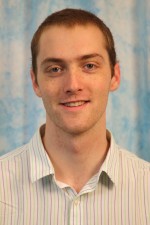
Carnegie Mellon University
2:00 pm to 3:00 pm
NSH 3305
Abstract:
Acoustic imaging sonars have been used for a variety of tasks intended to increase the autonomous capabilities of underwater vehicles. Among the most critical tasks of any autonomous vehicle are localization and mapping, which are the focus of this work. The difficulties presented by the imaging sonar sensor have led many previous attempts at localization and mapping with the imaging sonar to make restrictive assumptions, such as a planar seafloor environment, or planar sensor motion. Lifting such restrictions is an important step toward achieving general-purpose autonomous localization and mapping unknown real-world environments.
In this dissertation, I take inspiration from related problems in the field of computer vision and demonstrate that imaging sonar localization and mapping may be modeled and solved using similar methods. To achieve accurate large-scale localization, I present degeneracy-aware acoustic bundle adjustment, a feature-based algorithm inspired by optical bundle adjustment. To achieve 3-D mapping of underwater surfaces, I propose several distinct algorithms. First, I present a method akin to shape-from-shading that uses a generative sensor model to infer a dense pointcloud from each image and fuses multiple such observations into a global model. Second, I describe a volumetric albedo framework for general-purpose sonar reconstruction, which derives from the related problem of non-line-of-sight reconstruction. This method performs inference over the elevation aperture and generates best results with a rich variety of viewpoints. Lastly, I present the theory of Fermat paths for sonar reconstruction, which utilizes the 2-D Fermat flow equation to reconstruct a particular set of object surface points with short baseline motion.
Thesis Committee Members:
Michael Kaess, Chair
Martial Hebert
George Kantor
John Leonard, MIT
